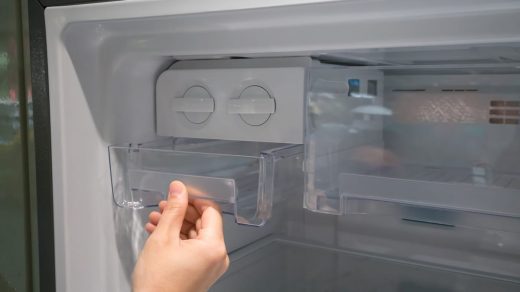Paying taxes are as certain as death as Benjamin Franklin once said. If you’re a Filipino, you might even find yourself averse to the idea of it as the country’s deplorable state of poverty and corruption fills the news day in, day out. But truth is it’s every Filipino’s responsibility to pay his share of taxes because evading the task would hurt more Filipinos who need it more than spiting the corrupt officials. Filipinos who find work and earn money online are not an exception to this citizen’s obligation. Sometimes, it is even necessary to hire accounting services Philippines for help with tax filings.
While the Bureau of Internal Revenue (BIR) is working on the “limbo state” of online workers and the actual process of their tax-paying, it’s best anyway to face the task at hand.
Freelancers pertain to self-employed individuals and people hired by companies as independent contractors, who the BIR categorizes either way as sole proprietors who have to do the RFP (register, file, pay) themselves. Prior to this, each freelancer must fully comprehend the process of tax compliance and other taxes he/she is required to pay or in some cases, get help from accounting services Philippines.
Here’s an aid to that:
Step 1: Secure your Tax Identification Number (TIN). If you don’t have one yet, here’s our BIR Tin Application: Everything You Need to Know post. After obtaining you TIN, settle the 500-peso registration fee at any Authorized Agent Bank (AAB) within your tax area. Once you have the receipt, go to your local BIR office to obtain your TIN card. With your TIN card at hand, you may now register as a self-employed individual.
Step 2: Have the following documents ready:
- NSO birth certificate
- NSO certified marriage certificate (of married)
- Community Tax Certificate (also sedula)
- Certification from your barangay captain (to certify address),
- BIR Form 1905 (for those who already have a TIN and used to work in an office, to change your Regional
- District Office)
- BIR Form 1901 (registration form page 1 and 2)*
- BIR Payment Form (Form 0605)**
*Certificate of Registration or COR (BIR Form 1901)
Fill out BIR Form 1901 and submit it with the required documentations noted on the form. Settle 500 pesos for the annual registration fee. This is paid on the first or last day of January. This is apart from the payment of the initial registration fee as a tax payer. To pay for the COR, fill out BIR Form 0605 in triplicate to pay for it.
**BIR Payment Form (Form 0605)
You will receive the BIR Form 0605 from the AAB. This document must be attached when you file
BIR Form 1901. When filing this form, make sure to check only the tax types that are relevant to your line
of work. This will save you from the unnecessary stress when paying tax returns. Form 0605 acts like an invoice from the BIR that the freelancer must fill out himself. It’s the form filled out to pay for almost every kind of tax.
Step 3: After Forms 1901 and 0605 along with the other documents are settled, you can go to your local BIR office and submit them.
Step 4: After submitting the aforementioned documents, attend the 1- to 2-hour long seminar conducted by the BIR examiner in order to get your COR. After the seminar, the BOR examiner will give you the date of claiming your COR.
Step 5: Bring your book of accounts to the seminar so you could register them. You’ll be using that book of accounts to document business expenses and earnings. A new book must be registered every fiscal year.
Step 6: Once you get your COR, bring a photocopy of the COR and Form 0605 you filled out to pay for your COR to a BBIR accredited printing press to have your receipts printed. BIR branches have a list which you can request to see. Meanwhile, the printing press will give you about 12 booklets (each containing 100 receipts) which will last you 5 years. The printing press will charge between 1,000 to 1,500 pesos for 12 booklets.
As soon as you have your COR, you are a registered taxpayer! As an online worker, these are the taxes you have to pay for with accompanying forms you’ll have to fill out:
Monthly Percentage Tax (3% of gross revenue)
Forms: 2551M and 0605
Due: Every 20th of the month to paid at partner banks
Quarterly Income Tax (based on net income)
Forms:1701Q and 0605
Due: April 15, August 15, November 15
Yearly and Final Quarter Payment of Income Tax
Forms: 1701 and 0605
Due: April 15 of the following year
Annual Registration Fee (Renewal of COR)
Forms: 0605
Due: On or before January 30 every year
Here’s a guide on tax deductions (FOR SAMPLE PURPOSES ONLY):
Let us suppose you earn 10,000 pesos a month.
Monthly Percentage Tax
Online workers are exempt from VAT, which qualifies you for 3% percentage tax. Each month, you must pay the government 3% of your total earnings for the month. 3% percent of 10,000 pesos is 300 pesos. Pay this amount on or before the 20th of the month. You can pay this at the partner banks listed with your local BIR office. You will need your Form 06005 to pay your percentage tax. You will also need to fill out the BIR Form 2551m every month along with this.
Quarterly Income Tax
Earning 10,000 pesos a month means you have a quarterly income of 30,000 pesos. A freelancer can apply two types of allowable deductions to their gross income: the Optional Standard Deductible (OSD) or the Itemized Deductible.
For OSD, you can automatically declare 40% of your gross income as your deductible. Opting for this method means you don’t have to itemize your expenses. Also the BIR doesn’t have to audit your expenses. This offers easy computation.
Choosing OSD with a 10,000 monthly income means you can automatically deduct 12,000 pesos from your 30,000 pesos quarterly income. This means that for the next 8 quarters, your tax will be deducted from 18,000 pesos, not 30,000 pesos.
Meanwhile, the Itemized Deductible method can be tedious as it requires you to diligently keep receipts. It’s naturally best to consult a bookkeeper or accountant.
- Fill out the BIR Form 1701 and 1701Q and pay the amount of the quarterly and annual income tax calculated from your taxable net income with 5% to 32% rate based on the prescribed tax table by BIR.
- Now that the BIR has an online filing and payment system, paying your taxes won’t be as strenuous. Register online as soon as you have your COR. Once your registration is approved, go to your RDO to have it activated. Once you have an active account, you should be able to input your information in the appropriate forms and it also automatically computes for you.
COR Renewal
Every year, you will need to register as self-employed worker. No need to fill out another Form 1901.
Bring your COR, Form 0605, and receipt to renew your taxpayer status with BIR.
Danella Yaptinchay is the managing director of Full Suite, a service company providing back end support to small businesses. She is a cofounder of Co.lab, a coworking space, and of the media company Homegrown. In constant pursuit of balance and self-development, she tries to apply the practices of yoga to her daily life.




Recent Comments